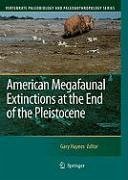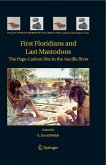Dieser Download kann aus rechtlichen Gründen nur mit Rechnungsadresse in A, B, BG, CY, CZ, D, DK, EW, E, FIN, F, GR, HR, H, IRL, I, LT, L, LR, M, NL, PL, P, R, S, SLO, SK ausgeliefert werden.
"This excellent volume is an antidote to the rhetorical bombast. Haynes ... thoroughly, fairly, and at times humorously frames the debate and puts the present studies in context. Eleven contributors present methodologically sound approaches that result in data-rich research. ... Summing Up: Highly recommended. Academic and professional libraries, upper-division undergraduate and above." W. L. Cressler III, Choice, Vol. 46 (11), August, 2009.
" Provides a very valuable overview of the current state of the extinction literature, referencing not just publications but also numerous conference presentations. Provide the broadest (and, in many respects, the most helpful) perspective by considering North and South America in conjunction rather than in isolation. Jeffrey V. Yule, Evolutionary Anthropology 18:159-160, 2009.
"Addresses one of the most controversial issues of the last glacial period, which affected ecosystems around the world: American megafaunal extinctions. ... discusses the extinction of genera across North and South America, with a single chapter focusing on the West Indies. ... the book appears smartly presented, a slim hardback book that is well laid out, with clear black-and-white images scattered throughout the chapters. ... a book designed for hardcore specialists focusing on the minutiae of extinction events specifically in the Americas ... ." (Alexander J. E. Pryor, Archaeological Review from Cambridge, Vol. 25 (1))









